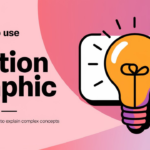1. The Power of Color Psychology in Animation
- Overview of color psychology: How different colors evoke specific emotions and associations.
- Importance of color choice in animation: How colors can influence mood, perception, and brand identity.
- Examples of color symbolism in animation: Analyzing popular animated characters and settings to illustrate the psychological impact of color choices.
2. Creating Emotional Connections with Animated Characters
- Importance of character design: How character appearance and traits can elicit empathy and connection from viewers.
- Personality traits and archetypes: How character personalities and behaviors can resonate with different audience segments.
- Character development and storytelling: How character arcs and relationships contribute to emotional engagement and investment in animated narratives.
3. The Dynamics of Movement in Animation
- Understanding movement psychology: How motion and animation timing affect viewer perception and engagement.
- Principles of animation: Exploring concepts such as squash and stretch, anticipation, and timing to create dynamic and expressive motion.
- Impact of movement on storytelling: How animation techniques can enhance storytelling, convey emotions, and guide viewer attention.
4. Leveraging Psychological Techniques for Effective Animation
- Contrast and visual hierarchy: Using contrast in color, size, and motion to draw attention and communicate hierarchy in animated scenes.
- Framing and composition: Applying principles of composition to guide viewer focus and create visual interest in animated sequences.
- Subliminal messaging and persuasion: Exploring how subtle cues and visual metaphors in animation can influence viewer attitudes and behaviors.
5. Case Studies: Real-World Examples of Psychological Animation
- Analyzing successful animated films and series: Examining how color, character design, and movement contribute to the psychological impact of animation.
- Highlighting specific scenes or characters that effectively utilize psychological principles to engage and resonate with audiences.
Conclusion:
- Recap of the psychological principles behind animation and their impact on viewer perception.
- Emphasis on the importance of leveraging color, character design, and movement in animation to create compelling and emotionally resonant content.



